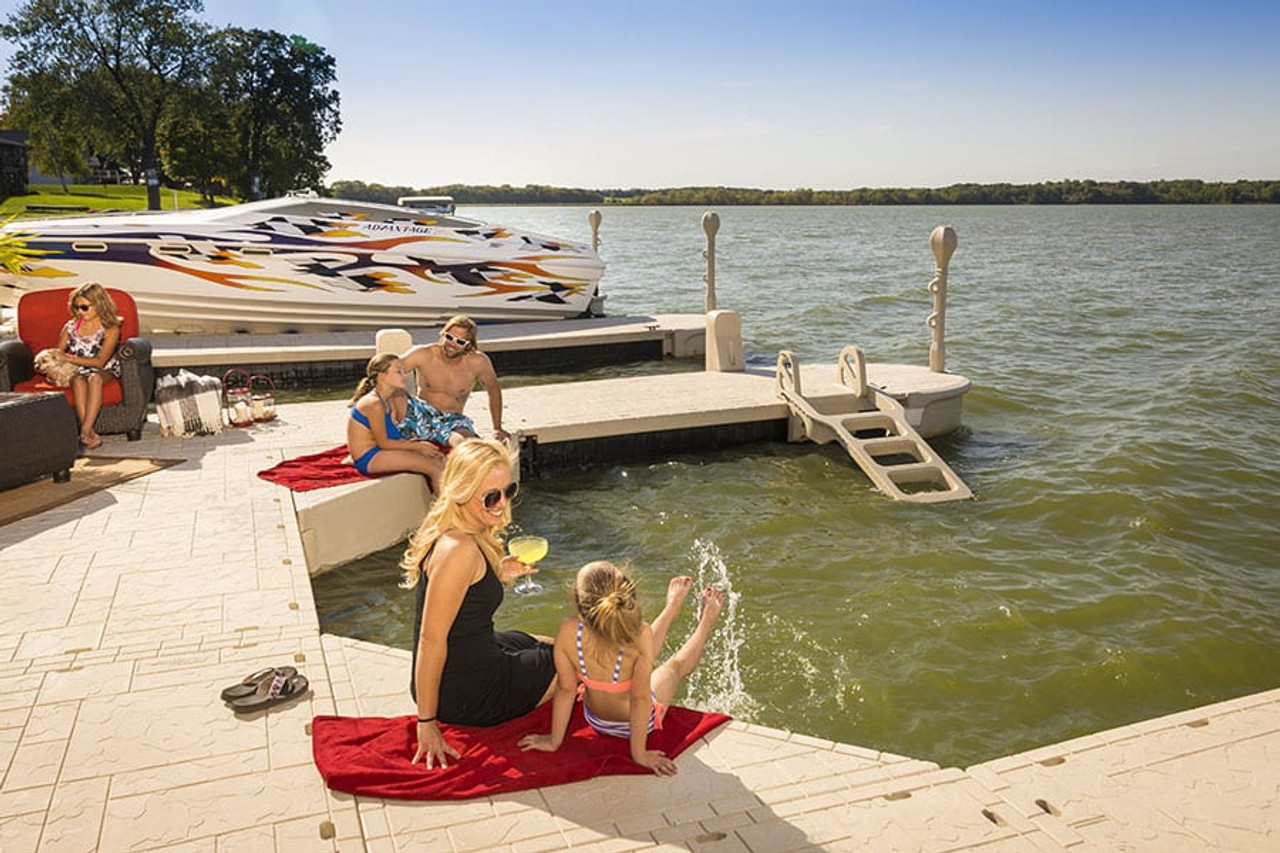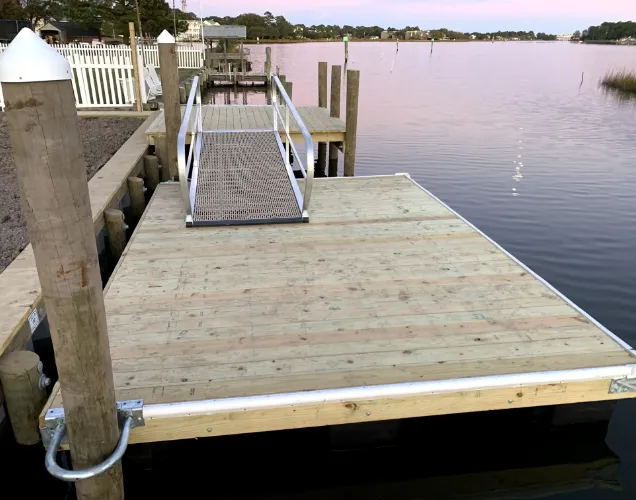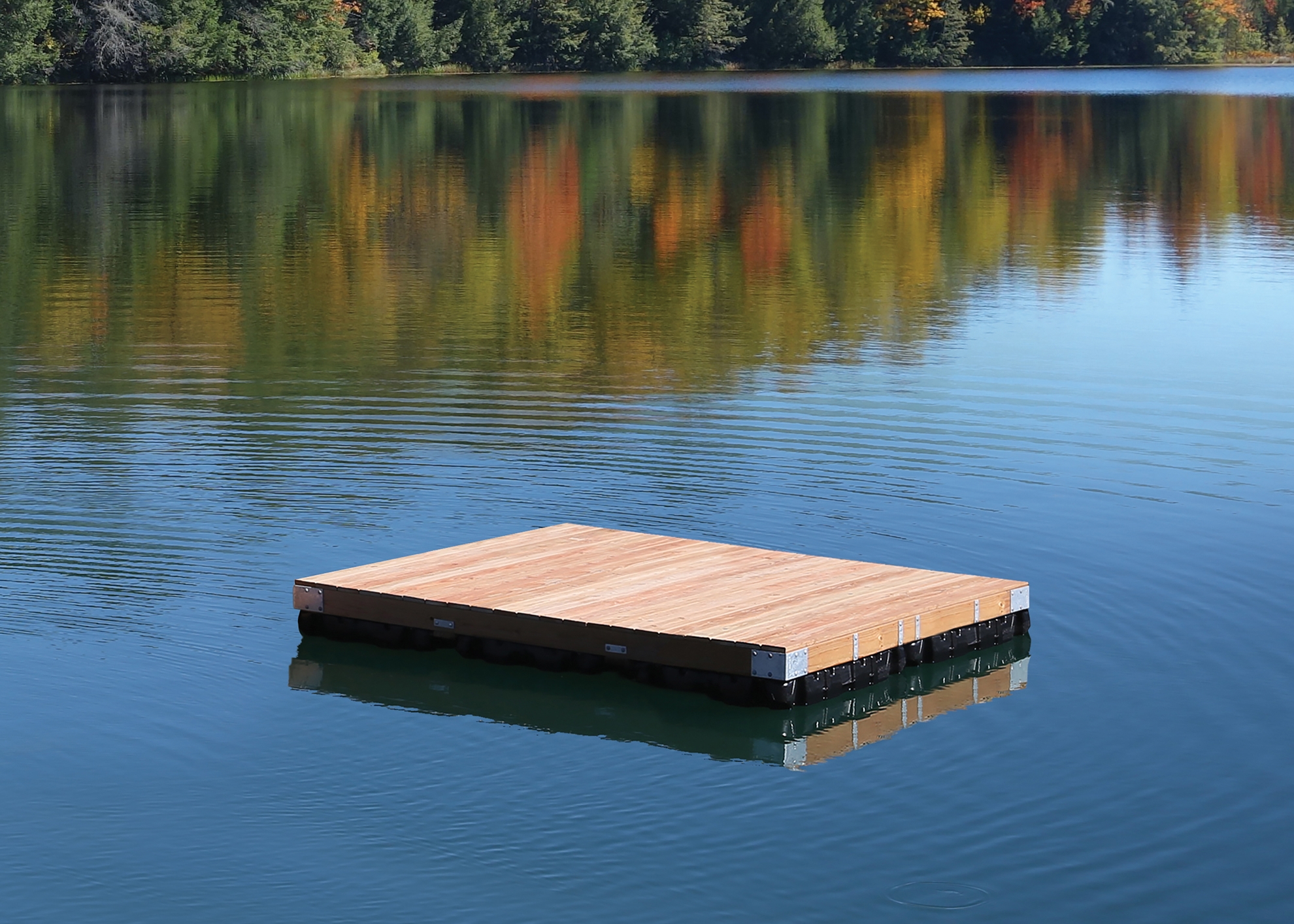Discover the Perfect Floating Dock Builder to Bring Your Waterside Vision to Life
Discover the Perfect Floating Dock Builder to Bring Your Waterside Vision to Life
Blog Article
Upgrade Your Waterside With Resilient Floating Docks
Updating your waterfront with durable floating docks can significantly boost both performance and aesthetic appeals, supplying a functional remedy for various water tasks. These frameworks are developed to adapt to changing water degrees, making sure safety and access throughout the seasons. With a series of products available, consisting of low-maintenance choices and typical wood, selecting the ideal dock can complement your individual style and satisfy practical requirements. Comprehending the subtleties of installation and maintenance is crucial for making sure long life and performance. What aspects should you consider when making this financial investment?
Advantages of Floating Docks
Floating docks offer a wide range of advantages that boost their allure for different maritime applications. Unlike conventional set docks, floating docks surge and loss with the trend, guaranteeing consistent availability for boats and boat regardless of environmental problems.
Additionally, floating docks are less complicated to set up and relocate, giving versatility for temporary or seasonal use. Their modular design permits customization to fit details demands, whether for exclusive marinas, property watersides, or industrial applications.
Furthermore, floating docks create very little disturbance to the aquatic environment, preserving local ecosystems and decreasing the chance of erosion. They likewise give enhanced security and security for customers, as their resilient nature provides a much more flexible surface area than rigid structures.
Moreover, floating docks can promote a diverse range of activities, such as angling, swimming, and entertainment boating, making them a valuable asset for waterside advancement. Their convenience and usefulness make floating docks a preferred choice for a variety of maritime projects.
Selecting the Right Materials
Choosing proper products for floating docks is important to their durability, performance, and general efficiency. When selecting materials, think about aspects such as ecological direct exposure, maintenance demands, and structural integrity. Common materials include timber, plastic, light weight aluminum, and composite alternatives, each offering distinctive benefits and downsides.
Wood, while visually pleasing, requires regular upkeep to protect against rot and degeneration. Pressure-treated timber can improve toughness, however it may still give in to water damage over time. Plastic drifts, commonly made from high-density polyethylene, are immune to rust and require minimal maintenance, making them an eye-catching option for low-maintenance applications.
Aluminum is another viable alternative, understood for its stamina and lightweight residential properties. It is resistant to rust and can hold up against extreme weather, although it might be extra costly than various other materials. Compound materials combine the ideal attributes of wood and plastic, supplying a durable and low-maintenance choice that imitates the look of timber without the associated downsides.
Ultimately, the selection of material need to line up with the planned use, ecological factors to consider, and budget restrictions, guaranteeing a sturdy and practical floating dock that meets your certain needs.
Setup Refine Summary
The effective installation of a drifting dock depends on cautious preparation and implementation, guaranteeing that it runs effectively in its designated setting. The very first step entails evaluating website conditions, consisting of water deepness, coastline attributes, and prevailing weather patterns, which will educate the dock layout and anchoring system.
Complying with the site assessment, the next phase is to prepare the floating dock parts. This includes putting together the frame, protecting drifts, and affixing any needed equipment. It is important to make sure that all links are water-resistant and robust to endure marine conditions.
When the dock is constructed, the installment procedure commences with positioning the dock in the water. This can involve a crane or other lifting equipment, especially for larger structures. Proper alignment is vital for performance and security.

Upkeep Tips for Durability
Regular upkeep is important for making certain the durability and optimal efficiency of a drifting dock. To accomplish this, start with routine inspections at the very least two times a year, focusing on the honesty of the dock's structure, consisting of the flotation tools and connecting equipment. Look for indications of wear, deterioration, or damage, and attend to any kind of issues immediately to prevent additional damage.
Cleaning up is one more critical element of upkeep. Get rid of debris, algae, and barnacles from the dock's surface area to stop slippery problems and keep aesthetic appeal. Utilize a light detergent and a soft brush to stay clear of damaging the dock's materials.
Furthermore, make certain that the dock is properly anchored and safeguarded to withstand seasonal modifications in water degrees and weather. Check the anchoring system for stability and make changes as required.
Enhancing Your Outside Visual
To develop an click to read aesthetically enticing outdoor space, incorporating a floating dock can substantially improve the total visual of your beachfront residential property. Floating docks are not only practical however can likewise offer as a striking centerpiece that enhances the all-natural environments - floating docks. Available in various products and layouts, these docks can be tailored to match your building's architectural design and landscape
The addition of attractive components, such as incorporated illumination or elegant railings, further elevates the dock's visual charm. Consider utilizing all-natural wood surfaces, which blend seamlessly with the setting, or opting for modern-day materials like aluminum or composite decking that offer a streamlined, contemporary look.
Strategically putting planters or seating locations on or around the dock can create welcoming areas that motivate leisure and pleasure of waterside sights. Furthermore, incorporating shades and structures that harmonize with your landscape will produce a natural visual throughout your outside location.

Final Thought

Upgrading your waterfront with sturdy floating docks can significantly enhance both performance and visual appeals, offering a versatile remedy for numerous water tasks. Unlike standard fixed docks, floating docks rise and fall with the trend, making sure consistent availability for watercrafts and watercraft regardless of ecological problems.Picking appropriate products for floating docks is crucial content to their longevity, efficiency, and total efficiency.When the dock is set up, the installment procedure begins with placing the dock in the water.In summary, floating docks deal many benefits, including versatility to water degree adjustments and a range of material alternatives.
Report this page